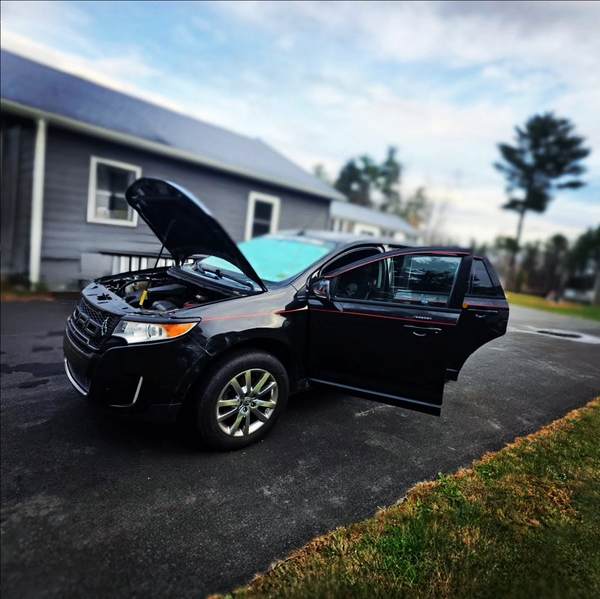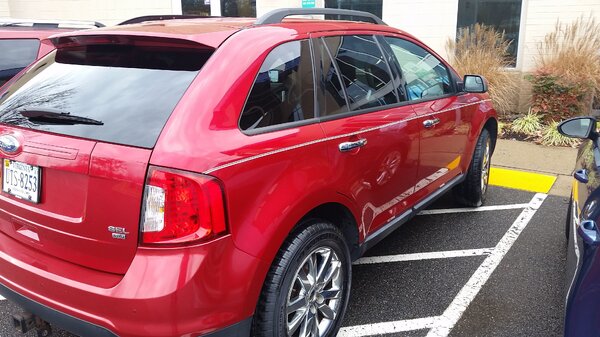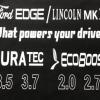-
Popular Contributors
-
Posts
-
Looks like the issue is solved. It appears that the previous owner hit a curb or something quite hard with the left rear wheel. It shifted the subframe slightly and bent the control arm. On dry roads there was enough resistance on the rubber that it didn't slip but as soon as it hit slippery the left wheel that was out of alignment would slip causing the swaying. I assume the tires were wearing badly which is why they put the new tires on it before selling the vehicle. Wasn't super expensive to repair. Alignment is good and runs nice and straight on ice now.
-
By 31bullitt16 · Posted
Other yr posts will have the yr they were posted. Do a search here for how to install, also forscan has a forum and other ford forums that go into using forscan along with u tube. The antenna mounts behind the lr trim panel and is attached to the tpms with the cable, it’s attached to the car with cable ties. I would check to see if the antenna is already installed. There’s a place for the hood switch and a pig tail to hook it up that’s already there, it’s on the pass. side next to the headlight. That’s about it other than forscan. -
By my 2012 edge · Posted
on my 2012 ford edge all warning lights came on brought it to ford they said code u3000. which is a abs module which is on backorder with no eta. can i rebuild the factory one orvis there a aftermarket available -
By Jared Isham · Posted
What about something like this for the sensor plug. I am kinda curious to know if I can just splice these wires to where the original sensor was cut and then attach a replacement sensor. $30 is much nicer than $150 https://denalielectronics.com/products/dnl-whs-050 -
I found two that are available. Ebay has one for $149 including shipping. 2007-2010 Ford Edge Rear Bumper Parking Sensor Wire Harness 7T4T-14N139 | eBay The other is from a salvage yard in San Fernando, CA for $149 (plus shipping?) FORD EDGE WIRE HARNESS REAR BUMPER PDC 2007 2008 2009 2010 INCLUDES SENSORS You might check your local salvage yards as this part fits all models from 2007 to 2010.
-
By Jared Isham · Posted
I have a 2010 Ford Edge SEL that was rear-ended in the passenger side corner. Being in California they decided to drastically increase the Salvage title restrictions, so in order to get it to pass the VSSI inspection I need to have my bumper replaced or at least assembled without the cracks and with the sensor working. I pulled the bumper off and found that the far left (passenger side) backup assist sensor is completely severed from the wiring harness - not sure if that was the collision company that did that or if that was due to the fender bender. Anyway I either need to figure out how to wire in a new sensor or replace the entire sensor assembly cluster. (Part # 7T4T 14N139 G2816) Does anyone know where I can find that part, hopefully not $300. Or any suggestions on where to get the connector so I can splice in new wire to make the cluster work? Attached is a picture of the part tag, the severed line, and what the assembled sensor looks like -
I have a parasitic draw. I drive the car home, park it and turn off the car. I hear a high pitch humming sound coming from the engine bay (when car is parked and turned off). The high pitch humming sound will be stop after a few hours. I hooked a voltmeter and saw that something is pulling power 2.5amps. I started checking fuses: 1. Removing fuse 86 sounds stops power draw stops 2. Removing fuse 90 sounds stops power draw stops 3. Check interior fuses nothing would stop the power draw. Any thoughts on what can be causing power draw?
-
I am reaching out to confirm the correct procedure for turning on the heater in my Ford Edge (2013 model). Could you please provide detailed instructions or any specific steps required to ensure proper heating functionality? If there are any reset procedures or checks (such as for the climate control system), kindly include those as well. Thank you for your support and guidance.
-
I caught mine failing I got out of the car and notices the dash lights were still on. I waited long enough to let everything time out and shut down but the dash lights were still on. I started and shut it down and the dash lights went off. I think there is a software issue but I doubt Ford cares
-
I think that's a good idea and similar to the approach the I took.
-
-
Topics








